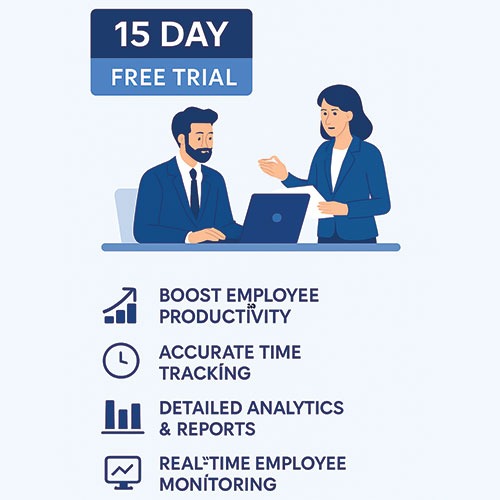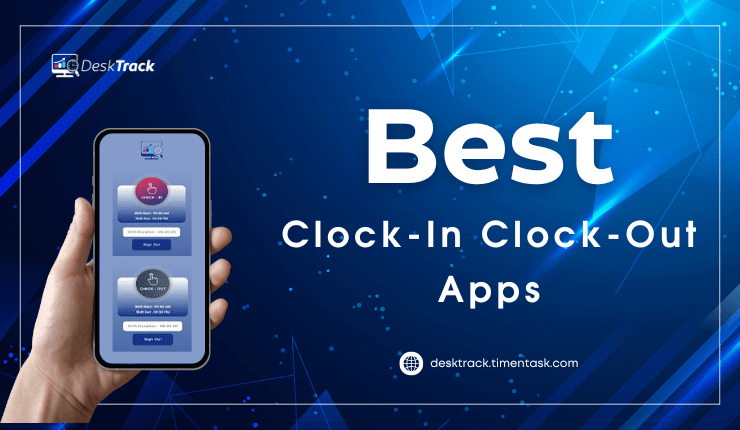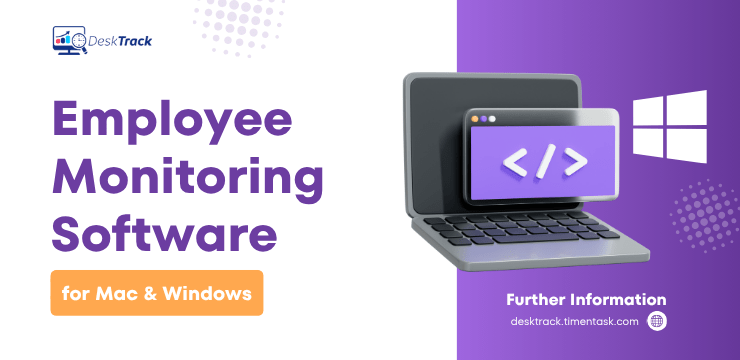
Are you looking for a perfect post to know all there is to know about timesheets? It’s right here. As you already know that it’s your human resources that run your business by working for you. So, to know how efficient they are and how much you need to pay them, you need to know their work hours.
Did you know that missed employee hours and/or time theft can cost you 20% of every dollar earned? That’s why time entries play an essential role. They assist you in keeping a record of every minute of your employee’s workday. However, you might require an alternative solution. Especially if you have larger teams, a complex system infrastructure, multiple departments, and multiple working models, including remote and on-field.
By the end of today’s blog post, you will have all the good and some not-so-good useful insights about timesheets. Plus, we will also provide you with the software used for it. Furthermore, we will also let you know the software we use to manage employee hours. With that out of our way, let’s get right into it.
An Overview of Timesheets
You can think of timesheets as data tables, which employers such as us use to keep track of the time our employees have worked during a particular period. Typically, a workday. Here are some additional insights you should be aware of.
- Businesses use these sheets to log the time spent on tasks, projects, and/or clients.
- These sheets have now become digital.
Read Also: All You Need to Know About Effective Team Management in 2025
What is a Time Entry?
As a business or organization, you must compensate and/or account for the time your team members spend doing different tasks and projects. A time entry involves the staff submitting the hours they begin and finish work on a task or project on your official timesheet. This data is a must-have for:
- Payroll processing
- Client billing
Types of Timesheets

There are different ways of timesheeting. Thus, accordingly, there are many categories of these sheets. In order, daily, weekly, biweekly, monthly, and semi-monthly.
|
Staff members clock their time entries at the start and end of each workday. |
|
Employees clock their hours for all workdays at the end of each week. |
|
Staff members submit their time every two weeks on a particular day. |
|
Employees are required to submit their timesheets every month. |
|
Employees must submit their time entries twice every month. |
To speed up the process of filling in time entries, free timesheet templates are also available throughout the internet.
5 Reasons a Business Should Use Timesheets
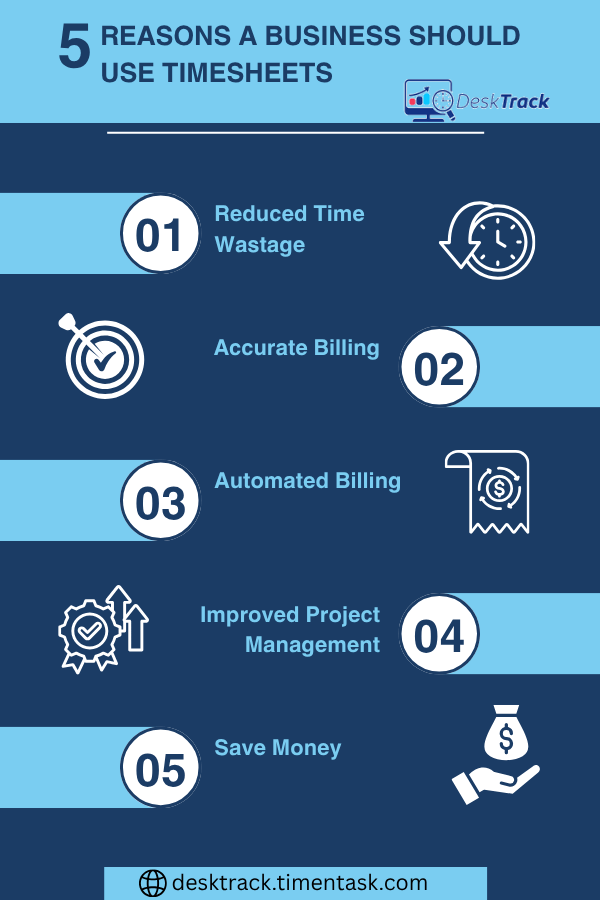
As someone running a business or organization, timesheeting helps you maintain your budget, meet deadlines, and achieve success.
These sheets are essential because they assist you in keeping accurate employee time records. Moreover, here are 5 more reasons to use timesheets.
1. Reduced Time Wastage
These sheets help you understand where you are wasting your time as a resource. They help you identify tasks that consume more than necessary of your valuable time. Overall, this data helps you make better decisions to optimize tasks.
2. Accurate Billing
Both underbilling and overbilling clients are expensive for you and your business. However, you will be fine since you are using the best time tracking software solution. Doing so sends a transparent message to your clients that:
- You are capable enough to efficiently handle their projects, and their money will not be wasted.
- Your clients don’t need to constantly view the status of their projects, as accurate bills and invoices let them view the time spent on their projects.
3. Automated Billing
Time entries and time data tables are the most useful for your business if you charge clients based on billable hours. If you use digital software or something to keep time records, you can also automate billing and invoicing. It reduces costs and skyrockets profits.
4. Improved Project Management
These time blocks are crucial tools for project management:
- By tracking project time, you get enough data to identify which employees to consider for a new project, role, or job based on performance.
- By analyzing an employee’s work-time utilization data, you can decide for which role she or he is the most suitable based on their particular skills.
- It helps you identify areas where employees are taking more time than required and require extra training.
- The time data from the sheets comes in handy for measuring the overall efficiency of your project.
- The sheets provide enough data to assist you in identifying the employee availability for particular projects. This makes it easy for you to distribute workloads in a balanced way.
- These work-time utilization sheets let your project managers monitor progress and anticipate delays.
- The sheets assist your project managers in estimating the expected costs. Plus, it is also doable for you to evaluate it against the actual project expenses.
5. Save Money
Since you know exactly what your employees are working on, it becomes simple for you to track work-time utilization efficiency and performance. Of course, this is possible as you can easily compare their work-time with the output.
Timesheets assist you in spotting employees performing less than your expectations, and are expensive to keep. Overall, this saves you unnecessary expenses as you know who is productive enough for you and who is not.
2 Key Applications of Timesheets
Inputting time entries in sheets and/or the software for it has many use cases. However, there are 2 key applications of these tools that come in handy.
|
Employers can simply monitor all things work-time related for accurate payroll processing. |
|
These are valuable tools for managers as they can easily record the start and end time of tasks, easily identifying which tasks take more time than allotted. |
3 Key Industry-Wise Applications of Timesheets
Make your workday more productive
Time tracking and work management can help you reach your goals
faster.
That was for the general use cases. However, there are also a few industry-wise applications where timesheeting proves to be an amazing aid.
|
Lawyers and other judicial professionals must maintain updated records of client hours and service details. Judiciaries use these sheets to easily keep track of bills based on this information. |
|
If you are a freelancer, then you know that time is money for you. Since you charge clients by the hour, accurately keeping track of work hours is essential. That’s where time entries help a lot. |
|
Accounting businesses know that the profit they make depends on the number of hours their employees spend on clients. The timekeeping process just becomes accurate for them with these sheets. |
Read More: How to Manage Freelancers Like a Pro: Tools, Tips & Tactics in 2025
An Overview of Timesheet Software in 2025
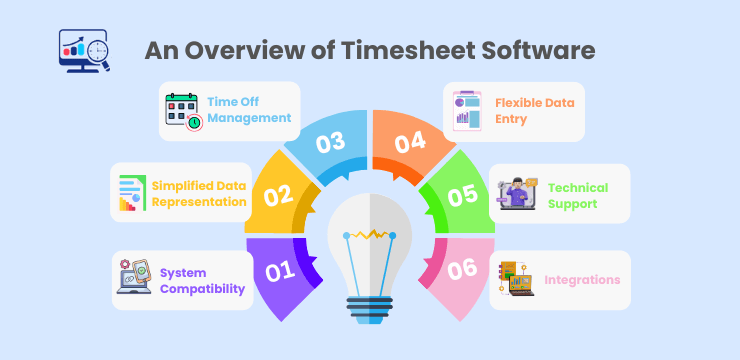
Time entry sheet management software solutions are primarily digital versions of these traditional sheets. However, the software provides you with more features, such as automated time entries, multiple project status views, analytics and reports, and an intuitive, user-friendly interface for added accuracy:
1. System Compatibility
The said software solution is compatible with multiple devices and operating systems, making it versatile and easily accessible. Of course, it is a crucial feature as these days no organization uses multiple devices with the same operating system.
2. Simplified Data Representation
As we mentioned before, you get different filters to precisely pinpoint the time data you wish to see. Plus, the software is flexible enough to provide you with different views, including the color-coded calendar and timeline view.
3. Time Off Management
The timesheet management software is also great for efficiently managing time off requests and approving sheets from a single platform. That is, now there is no clutter or chaos when it comes to disapproving or approving leaves, as managers can do it with a click of a button. That too, in real-time.
4. Flexible Data Entry
The software also lets you enter employee hours from multiple sources to ensure that not even a minute of work goes unnoticed and unrecorded. For example, the tool allows entries from:
- RFID tags
- Web portals
- Smartphones and other systems you use.
5. Technical Support
The software for managing timesheets also provides you with 24/7 technical support. This is crucial in case you want to wrap your head around a new update, provide additional software usage training to employees, or for anything else, such as an error or glitch.
6. Integrations
Time entry software solutions are also seamlessly integrable with all the other software, tools, and apps you use. This allows you to export time data or access all integrated features from a single platform. For example, integrations with your payroll software allow one-click time data export for streamlined payroll processing.
DeskTrack: More Than Timesheet Software
Need more than automated time entry sheets from a single platform? DeskTrack is your answer. This all-in-one time tracking, employee monitoring, screenshot monitoring, productivity management, and project management software solution is your complete workforce management solution package:
- Real-time time tracking with data analytics
- Multi-device data access and synchronization
- Multiple project views, including the color-coded calendar view, for easy understanding.
- Online and offline tracking
- Behavior analytics
- App, URL, and file usage tracking
- Data leak protection
- GPS and geofencing-based time and location tracking
- Blocks blacklisted URLs and much more
Conclusion
Now, we hope that you are clear about timesheets and all their applications. As a final word, we can say that businesses and organizations cannot manage employee efficiency without proper sheets to record their employees’ work hours on various tasks and projects. Only with proper timesheeting and using the right tools can you track employee work-time utilization efficiency, boost it, and automate processes to save time and money. With the proper time entry management software, you can expect nothing less than accurate work hours data and precise efficiency. However, what if you require more than that? Switching between various applications is only time-consuming and unoptimized. DeskTrack, the best all-in-one employee monitoring software, covers it all.
Frequently Asked Questions (FAQ)
Q. What is a Timesheet?
Ans. You can think of timesheets as data tables, which employers such as us use to keep track of the time our employees have worked during a particular period. Typically, a workday. Businesses use these sheets to log the time spent on tasks, projects, and/or clients.
Q. What is a Timesheet Period?
Ans. The time between the start and end date on a timesheet, for which the time is logged.
Q. Why do We Need Timesheets?
Ans. As someone running a business or organization, timesheeting helps you maintain your budget, meet deadlines, and achieve success. These sheets are essential because they assist you in keeping accurate employee time records.
Q. What are the Three Types of Timesheets?
Ans. Time entry sheets are of 5 categories:
- Daily sheets
- Weekly sheets
- Biweekly sheets
- Monthly sheets
- Semi-monthly sheets
Q. What is a Timesheet Software Solution?
Ans. Time entry sheet management software solutions are primarily digital versions of these traditional sheets. However, the software provides you with more features, such as automated time entries, multiple project status views, analytics and reports, and an intuitive, user-friendly interface for added accuracy.



